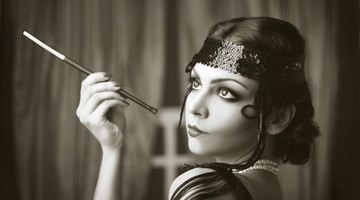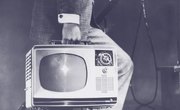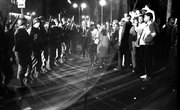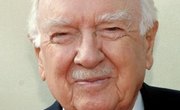When people think about the 1920s, images of Prohibition era speakeasies often come to mind, populated with flappers, gangsters and bootleggers -- but this romanticized image fails to account for the massive social and cultural changes the decade brought to America. The "Roaring Twenties" ushered in the birth of a modern national lifestyle, as war-weary Americans came to value convenience and leisure over hard work and self-denial.
Culture Clashes
The flapper, with her bobbed hair and short skirts, may be iconic today, but she was scandalous in the 1920s. Her bold drinking and smoking in public contrasted sharply with the old Victorian values of restraint that once dominated American minds. Young city-dwellers embraced change, while many older people in small towns looked back to a simpler time. Perhaps nothing exhibited this clash between old and new as much as Prohibition itself. The moral fervor that led to the passage of the 18th Amendment quickly dried up, leading to lax enforcement and the rise of speakeasies controlled by vast, organized criminal networks.
The Rise of Consumerism
Across America, a national culture grew out of advances made to fuel the U.S. effort in World War I. The military's need for multiple exact-size uniforms led to the first consumer ready-to-wear clothing, and new appliances such as electric refrigerators and washing machines meant women had more leisure time. If rural Americans found fault with the scandalous behavior of urban youth, it was perhaps because stories of it flooded their homes thanks to national magazines, advertising and radios. The development of the assembly line made it cheaper to mass-produce automobiles, which resulted in lower prices for consumers. By 1929, there were 27 million cars on U.S. roads -- nearly one for every household.
All That Jazz
Cars gave young people freedom and mobility, and particularly in major cities, they flocked to jazz clubs to dance and listen to musicians such as Duke Ellington and Louis Armstrong, who became famous nationwide through the radio. By the end of the decade, more than 12 million American households had a radio. But entertainment in the 20s was more than just music: the decade also saw the rise of spectator sports such as boxing and baseball. The film industry settled in Hollywood, and approximately 75 percent of Americans took in the latest feature at least once a week.
The Politics of Fear
All of this change didn't come without resistance, however. Immigrants from all over the world flooded the land of opportunity, and fear among some white Americans led to racial and ethnic conflict. Racial stereotypes were common comedy fodder on radio shows, and for many rural Americans these racist depictions were their only exposure to minorities. The Ku Klux Klan experienced a surge in membership, and began targeting other racial minorities as well as African-Americans. Resentment led to restrictive immigration laws that discriminated particularly against Asians and Eastern Europeans, giving preferential treatment to white immigrants from Great Britain and Northern Europe.
Related Articles
References
- History.com: The Roaring Twenties -- Facts & Summary
- University of Houston Digital History: The Consumer Economy and Mass Entertainment
- The Ohio State University EHistory: Clash of Cultures in the 1910s and 1920s -- Introduction
- University of Houston Digital History: The Formation of Modern American Mass Culture
Writer Bio
Jennifer Mueller began writing and editing professionally in 1995, when she became sports editor of her university's newspaper while also writing a bi-monthly general interest column for an independent tourist publication. Mueller holds a Bachelor of Arts in political science from the University of North Carolina at Asheville and a Juris Doctor from Indiana University Maurer School of Law.











